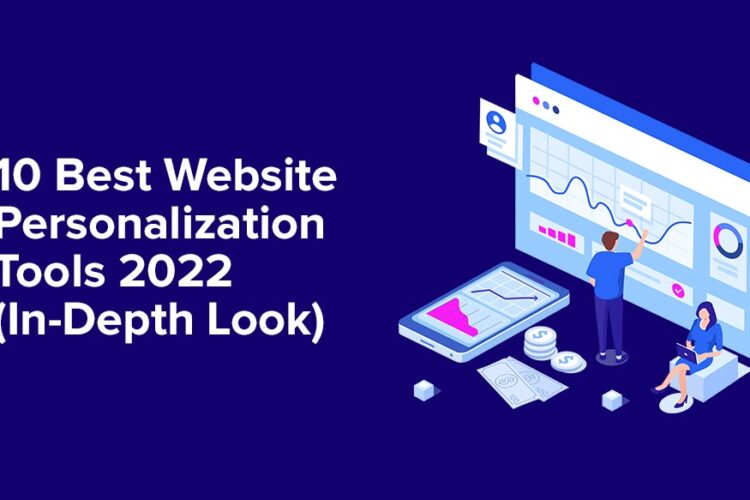
I. Introduction to Personalization Tools
II. Benefits of Using Personalization Tools
III. Types of Personalization Tools
IV. Tips for Choosing the Right Personalization Tool
Introduction to Personalization Tools
Welcome to the world of personalization tools! Have you ever visited a website and felt like it knew exactly what you were looking for? That’s the power of personalization at work. Personalization tools are revolutionizing the way businesses interact with their customers by tailoring content, recommendations, and experiences based on individual preferences.
Personalization tools utilize data and analytics to create personalized experiences for users. By understanding user behavior, preferences, and demographics, these tools can deliver content that resonates with each individual, making their experience more engaging and relevant.
Imagine shopping online and seeing product recommendations based on your past purchases or browsing history. Or receiving personalized emails with content that matches your interests. That’s the magic of personalization tools in action!
Whether you’re a business looking to enhance customer experience or a consumer seeking a more personalized online journey, personalization tools can make a significant impact. By leveraging these tools, businesses can build stronger relationships with customers, drive engagement, and ultimately boost sales.
Benefits of Using Personalization Tools
Hey there! Are you looking to take your website or marketing strategy to the next level? Well, you’re in luck because personalization tools can be a game-changer for your business! Let’s dive into some of the amazing benefits of using personalization tools:
- Increased Customer Engagement: Personalization tools allow you to tailor content and experiences to each individual visitor, making them more likely to engage with your brand. When customers feel like you understand their needs and preferences, they are more likely to stick around and interact with your website.
- Improved Customer Experience: By personalizing your website or marketing efforts, you can create a more seamless and enjoyable experience for your customers. Whether it’s suggesting relevant products, sending personalized emails, or showing targeted ads, personalization tools can help you deliver a more personalized experience that keeps customers coming back for more.
- Higher Conversion Rates: Personalization can lead to higher conversion rates as customers are more likely to purchase products or services that align with their interests and preferences. By showing customers personalized recommendations or offers, you can increase the likelihood of them making a purchase.
- Increased Customer Loyalty: When customers feel like you understand and care about their needs, they are more likely to become loyal to your brand. Personalization can help build stronger relationships with your customers, leading to repeat business and long-term loyalty.
- Improved Data Collection: Personalization tools can also help you gather valuable data about your customers’ preferences, behaviors, and interests. This data can be used to further personalize your marketing efforts and improve overall customer experience.
So, as you can see, using personalization tools can have a significant impact on your business. By personalizing your website, emails, ads, and more, you can create a more engaging, seamless, and tailored experience for your customers, ultimately leading to increased engagement, conversions, and loyalty. If you’re looking to take your business to the next level, consider incorporating personalization tools into your marketing strategy today!
Types of Personalization Tools
Personalization tools are a fantastic way to enhance the user experience on your website or digital platform. These tools allow you to tailor content, recommendations, and interactions to suit each individual user’s preferences and behavior. There is a wide variety of personalization tools available, each with its unique features and benefits. Let’s explore some of the most common types of personalization tools:
1. Content Personalization Tools
Content personalization tools focus on delivering relevant and engaging content to users based on their interests, behavior, and preferences. These tools analyze user data such as browsing history, search queries, and demographic information to recommend articles, products, or services that are most likely to resonate with each user. By personalizing content, you can increase user engagement, drive conversions, and build brand loyalty.
2. Recommendation Engines
Recommendation engines use algorithms to suggest products, services, or content to users based on their past behavior and preferences. These tools are commonly used in e-commerce platforms, streaming services, and news websites to increase user engagement and drive sales. By providing personalized recommendations, you can help users discover new products or content that align with their interests, ultimately improving their overall experience on your platform.
3. Email Personalization Tools
Email personalization tools allow you to create dynamic and personalized email campaigns tailored to each subscriber’s interests and behavior. These tools can segment your email list based on user data, create personalized subject lines and content, and automate email sends based on user interactions. By sending personalized emails, you can increase open rates, click-through rates, and conversions, ultimately driving revenue and customer loyalty.
4. Social Media Personalization Tools
Social media personalization tools help you create personalized experiences for your followers on social media platforms. These tools can analyze user data, preferences, and interactions to deliver targeted content, ads, and messages to each user. By personalizing your social media content, you can increase engagement, reach new audiences, and build stronger relationships with your followers.
5. Personalization Platforms
Personalization platforms are comprehensive tools that combine various personalization techniques to create a seamless and personalized experience for users across multiple channels. These platforms often include features such as content personalization, recommendation engines, email personalization, and A/B testing capabilities. By utilizing a personalization platform, you can streamline your personalization efforts, track user interactions, and optimize your strategies for maximum impact.
When choosing a personalization tool for your website or digital platform, consider your specific goals, budget, and technical requirements. It’s essential to select a tool that aligns with your objectives and can easily integrate with your existing systems. By investing in the right personalization tool, you can enhance the user experience, drive engagement, and achieve your business goals.
Tips for Choosing the Right Personalization Tool
So you’ve decided to take the plunge and invest in a personalization tool for your business – fantastic choice! With so many options available on the market, it’s important to choose the right tool that aligns with your goals and objectives. Here are some tips to help you make the best decision:
- Define Your Goals: Before you start your search, it’s essential to clearly define what you want to achieve with a personalization tool. Are you looking to increase conversions, improve customer engagement, or enhance user experience? Knowing your goals will help you narrow down your options and select a tool that meets your specific needs.
- Consider Your Budget: Personalization tools come in a range of price points, so it’s important to establish a budget before you start your search. Determine how much you’re willing to spend and look for tools that offer the features you need within your price range.
- Ease of Use: Look for a tool that is user-friendly and intuitive. You want a tool that is easy to set up and manage, so you can focus on creating personalized experiences for your customers without getting bogged down in technical details.
- Compatibility: Make sure the personalization tool you choose is compatible with your existing technology stack. You don’t want to invest in a tool only to realize it’s not compatible with your CRM, CMS, or e-commerce platform.
- Scalability: Choose a tool that can grow with your business. As your needs evolve and your customer base expands, you want a personalization tool that can scale to meet your changing requirements.
- Customization Options: Look for a tool that offers a high level of customization. You want to be able to tailor the personalization experience to match your brand and resonate with your target audience.
- Integration Capabilities: Consider how the personalization tool integrates with other marketing tools and platforms you use. Seamless integration will allow you to create a cohesive, omnichannel personalized experience for your customers.
- Analytics and Reporting: Choose a tool that provides robust analytics and reporting capabilities. You want to be able to track the performance of your personalized campaigns and make data-driven decisions to optimize your strategy.
- Customer Support: Finally, consider the level of customer support offered by the personalization tool provider. Look for a company that offers responsive support and resources to help you maximize the value of the tool.
By following these tips, you can select the right personalization tool that will help you deliver relevant and engaging experiences to your customers, drive conversions, and ultimately grow your business. Remember, personalized experiences are key to building lasting relationships with your audience, so choose wisely and watch your business thrive!










Comments